
Pandemics are global outbreaks of infectious diseases that spread rapidly and affect a large number of people. They can be caused by a variety of pathogens, such as viruses, bacteria, and parasites, and can have severe consequences for public health and the economy. In recent years, the world has seen several pandemics, including the HIV/AIDS pandemic and the COVID-19 pandemic, which have had a significant impact on global health and society.
New research reveals the mechanisms behind pathogen spillovers and a way to predict and prevent them.
Preserving and restoring natural habitats could help prevent the spread of pathogens from wildlife to domesticated animals and humans, according to new research in Australia. One study, published in the journal Nature, found that when bats experience habitat loss and food shortages, their populations may splinter and they may excrete more viruses.
As a result, they may move closer to humans in urban and agricultural areas. By analyzing data on bat behavior, distribution, reproduction, and food availability, as well as records of climate, habitat loss, and other environmental conditions, the study was able to predict when the Hendra virus, a potentially deadly illness for humans, would spill over from fruit bats to horses and then to people.
The researchers found that in years when food was abundant in their natural habitats during winter months, bats emptied out of agricultural areas to feed in native forests, and away from human communities.
A second paper was published in Ecology Letters and used data from the Nature study to reveal ecological conditions when bats excrete more or less virus.
While previous research has shown correlations between habitat loss and the occurrence of pathogen spillover, these studies together reveal for the first time a mechanism for such events and provide a method to predict and prevent them.
SARS-CoV-2, SARS-CoV-1, Nipah, Hendra, and possibly Ebola are all examples of viruses that fatally spill from bats to humans, sometimes after transmission through an intermediate host. In humans, the Hendra virus has a 57% fatality rate, and the Nipah virus can be up to 100% fatal – though transmission in humans is inefficient.
“Right now, the world is focused on how we can stop the next pandemic,” said Raina Plowright, professor in the Department of Public and Ecosystem Health at Cornell University, and senior author of both studies. “Unfortunately, preserving or restoring nature is rarely part of the discussion. We’re hoping that this paper will bring prevention and nature-based solutions to the forefront of the conversation.”
Plowright and colleagues are investigating whether the basic mechanisms found in this study apply to other examples of pathogen spillover from wildlife to humans.
For the studies, the researchers developed datasets from 1996 to 2020 in subtropical Australia that described the locations and sizes of fruit bat populations, the landscapes where they foraged, climate and El Niño events, years when there were food shortages, bat reproductive rates, records of bat intakes into rehabilitation facilities, habitat loss in forests that provide nectar in winter, and years when flowering in existing winter forests occurred.
The scientists then created computer models (called Bayesian network models) to analyze the data, and they discovered two factors driving spillover: habitat loss pushing animals into agricultural areas and climate-induced food shortages. In years following an El Niño event (high temperatures in the Pacific Ocean), buds of trees that bats depend on for nectar failed to produce flowers in the subsequent winter, leading to a food shortage. Human destruction of forest habitat for farmland and urban development has left few forests that produce nectar for bats in winter.
Due to food scarcity, large populations of bats split into smaller groups and moved to agricultural and urban areas, where weedy species and fig, mango, and shade trees offered shelter and reliable but less nutritious food sources than nectar.
When stressed from lack of food, few bats successfully reared their young. According to the Ecology Letters paper, they also shed viruses, possibly because they needed to conserve energy by directing it away from their immune systems. Also, the bats that had moved to novel winter habitats, such as agricultural areas, shed more virus than bats in traditional winter habitats.
In agricultural areas, pathogens may spread when urine and feces drop to the ground where horses are grazing, leading to Hendra virus infections. Horses act as an intermediary and occasionally spread the virus to people.
To their surprise, Plowright and colleagues discovered that when the remaining stands of eucalyptus trees bloomed in winter, large numbers of bats flocked to these areas. During those flowering events, pathogen spillover completely ceased.
“We put these data into the network models and found that we could predict spillover clusters based on climate, the availability of food, and the location of bats,” said Plowright. “We show that when remaining habitat produces food, spillover stops, and therefore a sustainable way to stop these events could be to preserve and restore critical habitat.”
Since 2003, researchers have noticed a gradual dwindling of large nomadic roosts in favor of many smaller roosts in agricultural and urban areas, a five-fold increase over the study period. Bats are less frequently returning in large numbers to their shrinking native habitats. This could be because forests that provide nectar in winter have been extensively cleared.
References: “Pathogen spillover driven by rapid changes in bat ecology” by Peggy Eby, Alison J. Peel, Andrew Hoegh, Wyatt Madden, John R. Giles, Peter J. Hudson and Raina K. Plowright, 16 November 2022, Nature.
DOI: 10.1038/s41586-022-05506-2
“Ecological conditions predict the intensity of Hendra virus excretion over space and time from bat reservoir hosts” by Daniel J. Becker, Peggy Eby, Wyatt Madden, Alison J. Peel and Raina K. Plowright, 30 October 2022, Ecology Letters.
DOI: 10.1111/ele.14007
Peggy Eby, a bat ecologist at the University of New South Wales, Australia, is the Nature paper’s first author. Co-authors include Alison Peel, a wildlife disease ecologist at Griffith University in Queensland, Australia, and Andrew Hoegh, a statistician at Montana State University. For the Ecology Letters paper, Daniel Becker, a biologist at the University of Oklahoma, and formerly a postdoctoral researcher at Montana State University, is the first author. Eby and Peel are also co-authors.

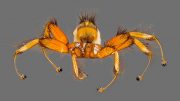
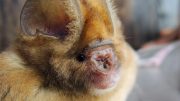

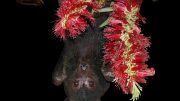
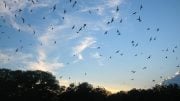
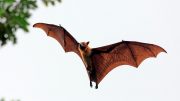

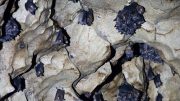
Land Use change — primarily conversion to urban or agricultural use — is driven by a growing population. Even if the thesis that “conservation” would be helpful is valid, it cannot be implemented effectively without reducing the rate of human population increase initially, and ultimately reducing the total human population, thereby reducing the pressure on land use change. With less demand for food and housing, land can re-wild as has happened at Angkor Wat, and in the South American and Middle American jungles.